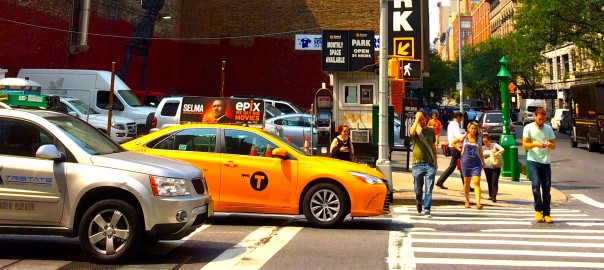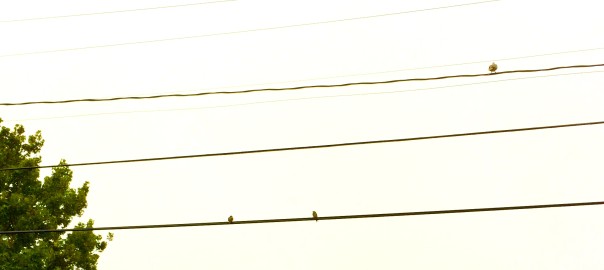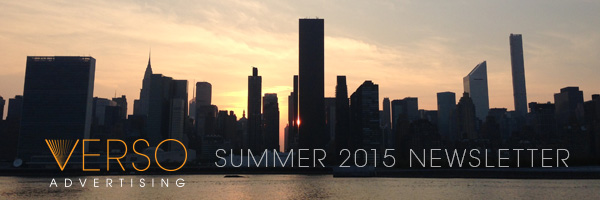According to the calendar, autumn began this week. We can feel the turn in the air even though the work pace has been fall-fast for weeks now. A lot has shifted in advertising this month—between Chrome dropping support for Flash and iOS9 enabling ad blockers—and as usual we’re keeping an eye on what’s about to change even as we’re working to sell great books in the here and now. These links represent some of the highlights we’ve read this week.
“THE WOMEN’S MAGAZINE FOR THE NEW GENERATION”
CJR on The Skimm, Broadly, and Refinery29:
“They’re paying more attention to news and politics, especially on women’s and social issues, but packaged with the right amount of edge (Broadly), twee (Refinery29), and Sex and the City references (The Skimm) to be taken seriously by the savvy millennial woman.”
INSTAGRAM POSTING TIPS
AdWeek gives an hour by hour breakdown of what people post by time of day. The study finds that early morning is the best time to post. Other findings:
“The most popular hashtags were #TBT (throwback Thursday) and #WCW (woman crush Wednesday) . . . And millennial women between 25 and 40 years old are the best “micro-influencers,” the company concluded in its research, which—in addition to the larger study—examined the Instagram activities of 2,000 adult females.”
VIDEO TIPS
Because we all need to start thinking like videographers, HubSpot offers three ideas for rethinking your video content: (1) Make it shorter, (2) Make it serial, (3) Make it real (they use the buzzword “disruptive”).
BOOMERS DISLIKE MOBILE ADS
A new study suggests that the Baby Boom Generation is not a fan of mobile ads:
“Baby boomers…had a highly negative response to mobile ads. They were less than half as likely as millennials to say they would accept ads in return for something of value.”
SNAPCHAT MARKETING DEVELOPMENTS
Evidence that the Snapchat experiments are working is in: brands as different as the NFL, Burberry and Goldman Sachs are expanding their presences on the app.
THE VALUE OF “OLD MEDIA” IN A NEW MEDIA WORLD
We don’t normally link to Shelf Awareness because we assume that a vast majority of our audience regularly read it. But it’s worth underscoring this Shelf Awareness report from Carolyn Reidy’s talk at BISG on meta data:
“[Although most readers spend an inordinate amount of time online,] it’s still very much old media such as TV, radio and certain print outlets that drive sales for new titles, even if a consumer is looking at the online version of that media.”
This is a point that’s worth reflecting on when considering your media buy: Where are your readers online and offline, and what are their most trusted sources for information?
SEX AND VIOLENCE A TURN OFF?
A new study suggests sex and violence not only do not sell, but may actually decrease the effectiveness of the ad. It sounds like a convincing study. Yet, oddly, this Business Insider article about the study is filled with examples of sex ads?
NEWS OF THE ADBLOCKOLYPSE
THE AD BLOCKER WHO HAD A CHANGE OF HEART
This report has been everywhere in the news for good reason. The maker of the most popular ad blocking app on the App Store, had a change of heart and stopped selling his popular app. Here’s why:
“Ad blockers come with an important asterisk: While they do benefit a ton of people in major ways, they also hurt some, including many who don’t deserve the hit.”
MILLENNIALS MORE LIKELY TO BLOCK ADS
There’s a reason native ads and working directly with social stars on Instagram and Vine are on the rise for reaching Millennials:
“Research suggests that a solid majority of internet users ages 18 to 34 are now blocking ads when they view digital content”
“JP MORGAN: EVERYONE NEEDS TO CHILL OUT ABOUT AD BLOCKING”
. . . So reads the headline of a Business Insider story on a JP Morgan report on ad blocking, that doesn’t see much of an affect (yet):
“So far, ad blockers on iOS 9 are only able to block ads on the Safari browser. JPMorgan notes that ad blocking apps have “impressively” made their way to the top of the app charts, but Safari’s share is just ~4% on desktop and ~23% on tablet and mobile, according to StatCounter.”





